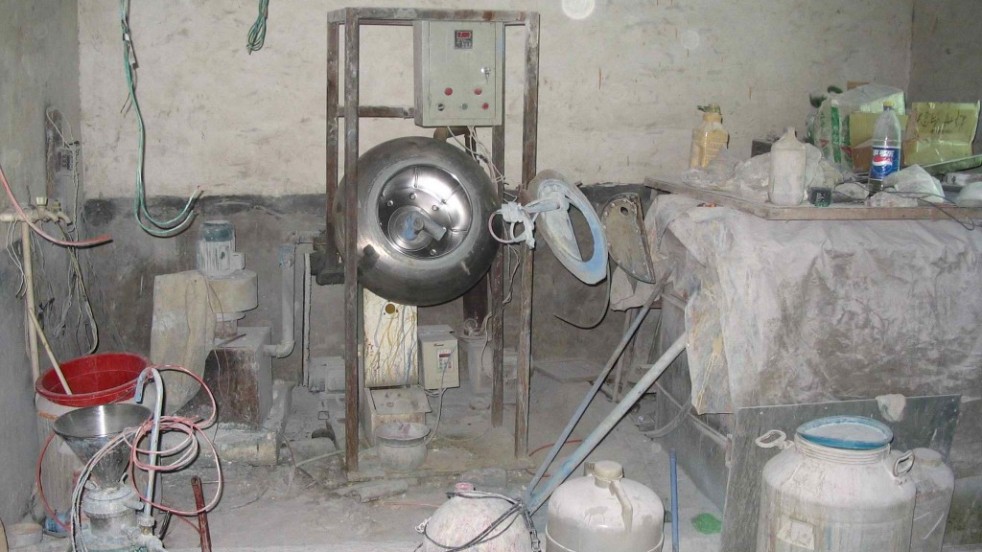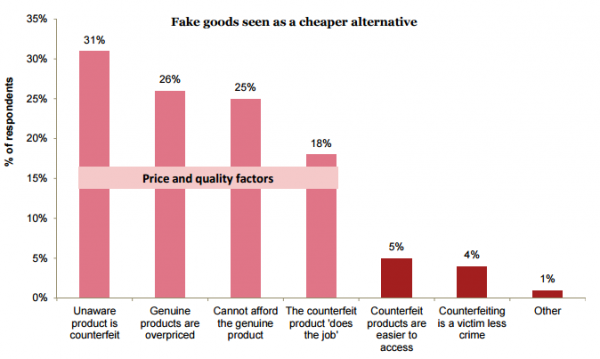It’s crazy to think that anyone would knowingly compromise their own safety to save a few dollars. Buying brands and products online that are too good to be true should represent a big warning sign to consumers, particularly if they are being sold through online marketplaces or untrusted websites.
Buying fake goods online is a dangerous activity. Their are no safety standards , certifications or accreditations in the counterfeit manufacturing world meaning that consumers put themselves at immense risk every time they purchase a fake.
It is estimated that, each year, deaths resulting from counterfeit products among the G20 economies bear an economic cost of over $18 billion U.S. dollars, with an additional $125 million dollars spent on treating counterfeit product-related injuries.
Habitual consumers of counterfeit products are playing Russian roulette with their safety and it is not a matter of if, but when, they suffer a counterfeit related injury.
Counterfeit Related Injuries and Dangers
Examples of counterfeit related dangers are too long for this post, but some examples include flammable disney dresses being sold to children, fires caused by electrical faults in fake electronic products, fake drugs where active ingredients are replaced with random household chemicals to road accidents in family cars caused by fake brake pad failure.
TheIndependet.co.uk wrote about the experience of a lady who purchased a fake hairdryer which burst into flames, in which she said:
“ I bought a new pair of GHD hair straighteners from eBay, which when switched on became extremely hot and burst into flames. Before I could drop the straighteners onto the floor, the flames burnt my hand leaving a terrible mark that lasted for weeks. The incident has really shocked me, I didn’t realise how easy it was to be fooled by counterfeits online.”
A similar cautionary tale of buying cheap (fake) products online comes from a chap called Tim Tyrell, pictured in hospital below, who decided to pass on a $30 legitimate Apple charger and instead purchased a much cheaper $10 wall and car combo charger from eBay.
Not long after receiving the goods, the wall charger exploded leaving Tyrrell with a nasty electrical burn which put him in hospital for a week . “Basically, the charger turned black and, it’s where the USB cord connects to the outlet, had a mini explosion”.
 (Image via KMSP-TV)
(Image via KMSP-TV)
Both of these people suffered relatively minor injuries, but there are many more sinister examples of counterfeits putting public health at risk. A major killer is counterfeit drugs. Despite the public warnings, consumers are still purchasing cheap counterfeit drugs that Interpol estimate kills over 1 Million people annually.
Pfizer, one of world’s largest pharmaceutical company’s, found that Colombian counterfeiters had set up labs in “dilapidated houses” in “a poor neighborhood of Bogotá,” and manufactured fake Ponstan tablets (a nonsteroidal anti-Inflammatory drug) in what would have been disgusting, and certainly non-sterile, conditions. The pills were discovered to contain “boric acid, floor wax, and yellow highway paint”, all of which can be deadly to humans.
 (An example of a counterfeit drug lab. Source: pbs.org)
(An example of a counterfeit drug lab. Source: pbs.org)
These are just a few examples. Almost every industry has some form of counterfeit problem that represents danger to consumers, but why do people buy fakes in the first place?
Counterfeiting is a thriving business and buyers are plenty. From my perspective, too much effort and resource is invested is enforcing against the counterfeiters, and not enough into consumer education. Where there are buyers, you will always find sellers, so logically working to reduce the number of counterfeit consumers will reduce the attractiveness of counterfeiting as an industry.
To effectively implement consumer education programs, first we must understand the consumer drivers for buying fakes.
Why do people compromise the safety with counterfeit goods?
Inter-generational change shows that we now have a more relaxed attitude to buying counterfeits over genuine products.
A report by PwC into attitudes to counterfeiting showed that while 90% of respondents believed it to be morally wrong to buy a fake brand, they were far more interested in saving money and less concerned about the consequences of counterfeit.
According to the PWC research, price is the top factor in why young people buy counterfeit goods. For many millennials (who practically live online), purchasing decisions are driven solely by price at the expense of brand trust, in contrast to older, more cautious, generations. The below graph outlines attitudes to counterfeiting, with price and quality being the determining factors.

(Source: PwC report Counterfeit goods in the UK. Who is buying what, and why?)
How can we correct attitudes to buying fakes?
Lessons from successful consumer education initiatives that have changed attitudes and saved lives
Ultimately greater investment into consumer education needs to me made by both industries and authorities to create greater awareness about the perils of buying fakes. If common sense is losing out to the notion of saving a dollar more frank dialogue around consequences is required.
We can look to campaigns such as the universal seatbelt and smoking campaigns both which have implemented effective education and enforcement messages reminding motorists to buckle up before driving and the damage smoking has on general health.
Images of people being thrown out of the cars as a result of not wearing a seatbelt and graphic images of smoking related cancer victims have over time penetrated the public psych and greatly contributed to changing behaviours for the better.
40 years ago the risks of not wearing a seatbelt was only starting to gain public attention. Many cars in circulation in the early 80s had bucket seats without seat belts at all. Today however, thanks to strong confronting (and consistent) messages to belt up over 90% of Americans habitually apply a seatbelt before driving (it is estimated that seatbelts saved 13,941 lives in 2015 alone).
Similarly, There has been a big decrease in the proportion of the population who smoke in the US. We have been bombarded with anti cigarette health messages for decades, including TV, print and even on cigarette packages. According to Gallup research self-reported adult smoking in 1954 at 45%, and remained at 40% or more through the early 1970. In 2014, this number had reduced to around 16.8%.
So will similarly themed graphic campaigns about the dangers of buying counterfeits (both physical and online) have an impact over time? It would of course require long term commitment by authorities and industries to be successful.
Most countries today have well funded Government agencies tasked with implementing national and state level campaigns with regards to wearing seat belts and the risks of smoking, such as the USA’s NHTSA and CDC respectively. No such home exists in America for anti-counterfeiting education campaigning. While you will find hundreds of reports about the counterfeit problem (written by industry bodies, government and NGOs) you will not find any National consumer education program about the risks of buying counterfeit. This needs to change.
I recognise that counterfeiting is arguably more complex given its penetration across so many different industries, jurisdictions, agencies and products, but it does not excuse a lack of national coordination when it comes to educating consumers on the perils on buying fake products.
My view on the need for greater focus on consumer education (as opposed to just going after the sellers) is also influenced by a general frustration amongst brand owners that anti-counterfeiting can be a whack-a-mole sport that renders marginal results. While I would argue that this also has a lot to do with inconsistent enforcement efforts, it does highlight that it can be challenging to stop counterfeiters where a buying market exists.
About brandsec
Brandsec is a corporate domain name management and brand protection company that look after many of Australia, New Zealand and Asia’s top publicly listed brands. We provide monitoring and enforcement services, DNS, SSL Management, domain name brokerage and dispute management and brand security consultation services.
